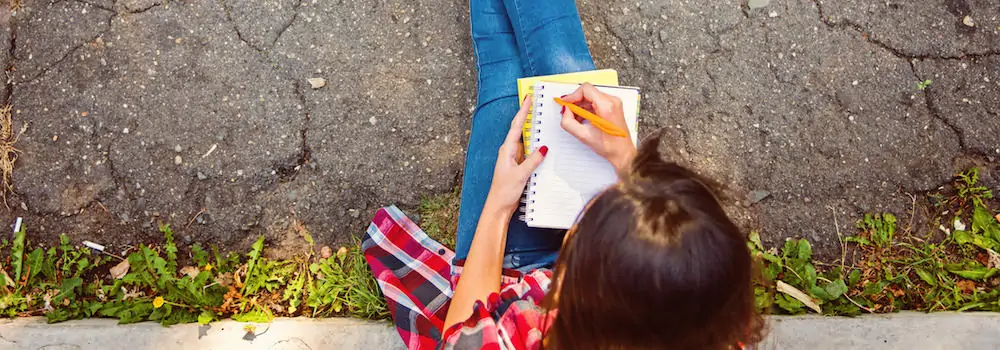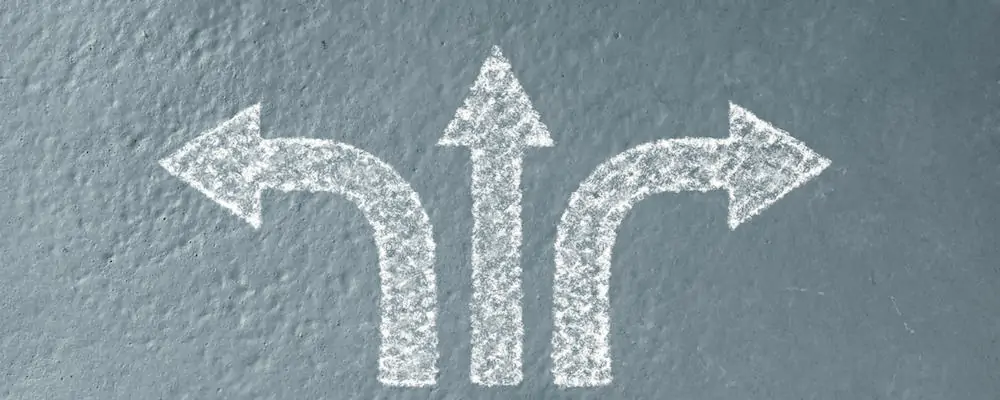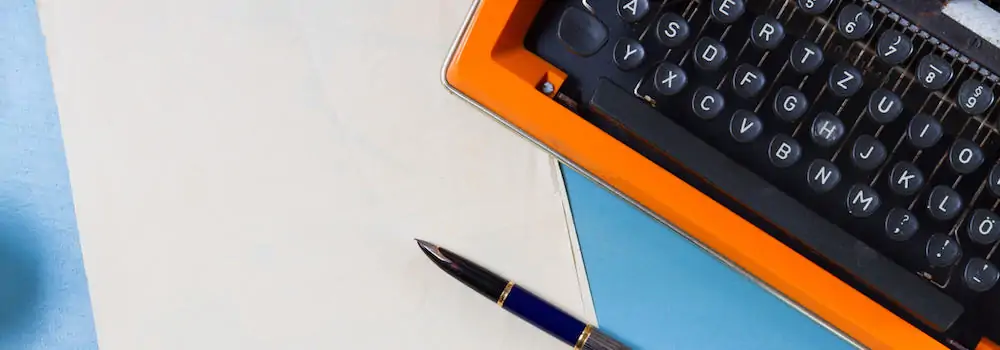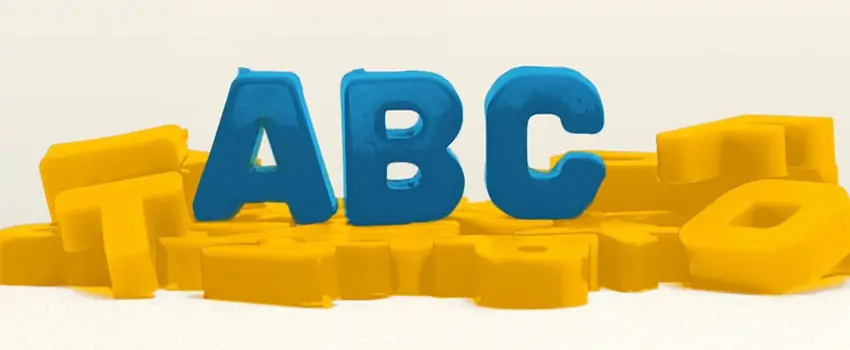
Writing for Fun & Money: Spring 2018 Essay Contests
As 2018 gets underway, students may be looking to bolster their resumes or earn some extra cash. For students who enjoy writing, essay contests offer the perfect opportunity to hone those writing chops, get work published and even win prize money.
Although sorting through the many online writing contests and determining your eligibility can be challenging, we’ve got you covered. Below, find a handy-dandy list of essay contests you can enter this spring, complete with deadlines, eligibility guidelines and information about prizes.
*This is not an endorsement for any specific event. Details of the events are subject to change, therefore please check with each event’s individual website for further information. Thanks!
When you do write your essay, don’t forget to use BibMe as a MLA formatter, resource for citation guides, bibliography maker, APA in text citation creator, or tool with thousands of citations styles.
Jane Austen Society of North America (JANSA) Essay Contest
Deadline: May 20Age Range: High school through graduate school students
http://www.jasna.org/programs/essay-contest?
Students are to submit essays addressing Jane Austen’s novel, “Persuasion.” First prize is a $1,000 scholarship, while the second-place winner gets $500 and the third-place winner gets $250. Winners (and their mentors, if named) earn a year-long submission to JANSA, and the winner receives a set of Norton Critical Editions of Austen’s novels.
New York Times Student Editorial Contest
Deadline: April 5 (opens Feb. 28)Age Range: 13 to 19 year-olds
https://www.nytimes.com/2017/08/31/learning/announcing-our-2017-18-student-contest-calendar.html
Students are tasked with writing a 450-word editorial and submitting it to the New York Times for judging by the paper’s editorial staff. Individual and team entries are both acceptable. Winners have their work published to the New York Times’ website.
AFSA High School Essay Contest
Deadline: March 15Age Range: 9th-12th graders
http://www.afsa.org/essay-contest
In a 1,000-1,250 word essay, students are to address questions posed by the AFSA on important international issues. The first-place winner will earn $2,500, a trip to Washington, D.C. to meet the Secretary of State and a semester’s paid tuition for Semester at Sea. The runner-up gets $1,250 and full tuition for the NSLC International Diplomacy Summer Program.
American Society of Human Genetics Essay Contest
Deadline: March 9Age Range: 9th-12th graders
http://www.ashg.org/education/dnaday.shtml
In honor of National DNA Day, which will be celebrated on April 25 this year, the Society of Human Genetics will announce the winners of its essay-writing contest. Entries must answer the question of whether consumers should have direct access to predictive genetic testing. The first-place winner will receive $2,000, while second place comes with a $1,200 prize and third place comes with $800.
The Norton Writer’s Prize
Deadline: June 15Age Range: College students
http://books.wwnorton.com/books/norton-writers-prize/?mid=145
Undergraduate students are encouraged to submit 1,000 to 3,000 word essays to this contest. Essays must come with a letter from a nominating instructor. Students can write their essays on a wide range of topics and in several different styles. First place comes with a $1,500 cash award, while the runner-up gets $1,000.
Trying to figure out how to cite? Do you need a works cited? Maybe an APA citation? How about an annotated bibliography? Or creating citations that adhere to the Chicago Manual of Style? BibMe can help you do all of that and more!
...

What’s the Difference Between They’re, There and Their?
By Devon Brown
Say the words aloud and they all sound the same, which can mean big trouble in writing. Even a master can make a mistake because we often write what we hear in our minds unconsciously. Below are a few tricks to help you remember the differences between this tricky trio.
They’re: A Contraction of They and Are
Apostrophe to the rescue. Let that tiny mark of punctuation be your guide on this one. Just like can’t is a shortened version of can not and don’t is the condensed version of do not, the apostrophe in they’re has the important job of joining two words together: they and are. When writing, you should be able to replace your they’re with the words they and are without changing the meaning of the sentence.
They’re Examples:
- Who are those two girls?
- They are my sisters.
- They’re my sisters.
- They are actors
- They’re actors.
There: Noun, Adjective, Adverb and Pronoun
There has so many uses, keeping them straight can be a challenge. One simple way to remember most is to think about location. There is often used to answer the question: Where?
There Examples:
- Please stand there.
- We would like to go there.
- There is a mouse in the kitchen.
- Is there a pool at the hotel?
Their: The Plural Possessive Pronoun
Their has the simple job of showing a group’s ownership and because of this, it is almost always followed by a noun.
Their Examples:
- Where are their shoes?
- Their dog is beautiful.
- The monkeys love their tree.
Now that you know the differences between they’re, there and their, all it takes is a little practice to remember them forever.
Quick Tip: When editing a paper, use the find function of your word processing software to look up their, they’re and there individually. This allows you to check if you used the correct word with ease.
Need help? BibMe Plus’s bibliography tools and grammar check looks for edits that could strengthen your paper and helps you automatically generate citations in MLA format (it also does APA citations).
...
What’s Prewriting?
It would be awesome if you could produce the perfect final draft of your assignment, the very first time you sat down at your laptop. Unfortunately, as the saying goes, "Rome wasn’t built in a day!" If you’re aiming for that A, you'll need to go through several important processes before you reach the final editing stage -- the first of these being prewriting. Otherwise, it’s like trying to ice a cake before you bake it. Impossible, right?
Why Do I Need To Prewrite?
As we all have our own individual learning styles, prewriting can mean different things to different people. But whatever your method, the endgame should be the same. At the end of the prewriting process you should be clear about what you are trying to communicate, how you are trying to communicate it, and who you are trying to communicate it to. Forget using a grammar checker at this point -- checks, tweaks and edits can come later. At the prewriting stage, it’s all about coming up with as many ideas as possible to see what will work best -- and ultimately get you the best possible grade!
What Are The Different Prewriting Techniques?
Popular ways to get the prewriting process going are outlining (where you list your ideas), diagramming, storyboarding, and clustering (also known as mind mapping). Clustering involves taking your central idea, circling it in the middle of the page, then writing down all the things you associate with your idea around it. For example, if your broad topic is 'climate change,’ then the phrases you write around it could include ‘CO2 emissions’, ‘plastic pollution in our oceans’, ‘deforestation of the rainforest’ and ‘intensive farming methods’. Another great idea is to freewrite, where you hone your idea and gain focus by writing freely about any thoughts you might have around the general topic.
What If I Don’t Have Any Ideas?
Prewriting is intended to help with exactly this problem. None of your fellow students or tutors will see what you come up with during the prewriting process, so you are free to let your imagination run wild. It’s not a problem if 99% of what you come up with in your brainstorming session ends up in the trash can -- it’s the 1% that you can work with that you need to focus on. With any of the techniques above, it's useful to set a timer and keep going until the time is up. That way, you can make sure you push past the obvious ideas to find something more original.
What Comes After Prewriting?
Finding your subject, planning how you are going to communicate it, and taking into account who you are going to communicate it to is only the first part of the paper-writing process. Next, you’ll move on to your first draft, which you will then need to keep editing until you’re happy with your work. Only at that point are you ready to do a final edit in preparation for handing in your assignment. Keeping a note of all your sources as you work will help when it comes to creating APA citations or citations in another format.
Checking that all the sources you have used to back up your argument have been correctly cited is an important factor in making sure your paper is ready to submit. Luckily, whether you are using the APA, Chicago/Turabian or MLA format, the BibMe citation tool can make this a stress-free part of the writing process.
...

What Exactly is Plagiarism?
Perhaps your school librarian or teacher assigned a research project and warned you not to plagiarize. Or, maybe you’ve seen the word appear on a news report that accused a famous person of plagiarizing a song or book. Plagiarism is a word that has some pretty scary consequences, but don’t worry. We’re here to show you the ropes so you know what plagiarism is and how to avoid it, so let’s get started:
What Exactly is Plagiarism?
Plagiarism is the act of taking information from a source and placing it in your own project without properly sharing where you found the information. If you add information from a book, website, newspaper, or another resource into your project, you can! You just need to provide credit to the original author.Think of it this way, if your friend let you borrow a cool hat and someone stopped you to ask about it, you’d mention that it’s your friend’s hat, right? You’d maybe even share where they bought it (if you happened to know). You wouldn’t tell the person it’s yours and you bought it on your own. This is kind of similar to research projects.
The difference between the hat scenario and research projects though is that in research projects, you’re required to share that you borrowed information and also share where you borrowed it from. You share who the original author is, where you found it, and some other pieces of information. If you don’t show the reader that you’re including another individual’s words or images in your paper, and you’re trying to pass it off as your own, you’re plagiarizing! There are other ways to plagiarize too. Read the next section to learn more.
What counts as plagiarism?
Plagiarism includes all of the following:- Using someone else’s work in your assignment and passing it off as your own
- Changing the words of a quote
- Using a quote from a source and not putting quotation marks around it
- Taking a line of text from a source and substituting many of the words for synonyms. For Changing the book title The Cat in the Hat to The Feline in the Cap is plagiarism! They’re essentially the same book title!
- Including incorrect information about the original source, such as changing the name of the author or including an incorrect URL
- Submitting a paper that was entirely written by someone else
- Submitting your work from a previously taken class or assignment and using it again for a different class or project. This is called self plagiarism.
What can I do if I don’t want to plagiarize?
Plagiarism is happily avoidable! One of the easiest things you can do to not plagiarize is to create citations for all the sources (i.e. books, journal articles, videos, etc.) of information you used to write your paper. That means creating a bibliography. You also need to cite quotes or paraphrases using in-text citations. For example, APA style and MLA format use parenthetical citations after a quote or paraphrase to indicate where the original information came from.If you need help creating citations, BibMe has tools that can help you create APA citations, MLA citations, or citations in several other styles. If you need writing help, try our grammar check on BibMe Plus. ...

Why Are There So Many Citation Styles?
BibMe.org offers students the option of using literally thousands of citation styles for their papers. You might be thinking to yourself, “Why do we need so many styles?,” or “Who could possibly want to use a citation style called ‘Yeast’?” Let’s take a look at some of these styles, and learn how each one plays a specific role in academic writing and research.
Different citation styles support different areas of study
Over time, different disciplines in academia have come to prefer certain citation styles over others. For instance, MLA format is widely used in the humanities, since the style is well-suited to citing literature and archival sources. Conversely, APA format is widely used in the social sciences, since the style performs well with quantitative studies and analysis.
Certain styles can have multiple citing systems
One reason that it appears that the number of citation styles is so vast is because of the possibility of different formatting systems within the same style. For example, Chicago style actually has two different sub-styles: author-date and footnote-bibliography. The footnote-bibliography system can be commonly found in humanities courses, whereas the author-date system has a more broad application.
Different papers appeal to different types of audiences
One reason that we can’t simply have one uniform citation style is that each academic paper can appeal to a vastly different audience than another. Since researchers working in different areas are writing for a specific audience, such as a science professor or fellow scientist, they want to make sure that their citations clarify information and sources that are most highly valued in their subject area. A writer in the social sciences would be more likely to cite a scholarly article than a writer in the humanities focusing on archival materials, so their citation system should match this.
There is an element of tradition in citation styles
One of the many reasons that there are so many citation styles is simply that many have been in publication for generations. The Chicago Manual of style, for instance, traces its roots back to 1906. That means that writers and researchers in these disciplines have come to rely on a specific citation style when creating their work, and could be reluctant to try a different one.
...

8 Intriguing New Words in 2017
Language is constantly evolving. Even though we have thousands of words in the English language, new words are added to the dictionary every year.
This year was no exception. In 2017, the dictionary swelled with new words that included both those which have become relevant through current discourse and those based on new technology.
To be added to a dictionary, a word needs to have been adopted by a significant portion of the English-speaking population, and it cannot be a word that comes in response to recent events but will flame out shortly. We looked at Merriam-Webster to see how strict the process really is. There, editors sift through books, magazines, newspapers and online media to see whether particular usages of words have gained enough popularity to become part of the dictionary. When a new word is discovered, it goes into a citation file at Merriam-Webster. If it racks up enough citation files, it can be officially added into the dictionary.
While this is a lengthy process, hundreds of new words made it into the dictionary this year. And below, we’ve gathered 10 of the most interesting words to come out of 2017.
1. Froyo (noun)
This shorthand term for frozen yogurt was first coined as a rhymey abbreviation back in the 1970s. As frozen yogurt has become an increasingly popular alternative to ice cream—and a slew of froyo shops have opened up across the country—the word’s usage has expanded in recent years. It was officially added to Merriam-Webster in September. For those who felt uneasy about using the shortened term, rest assured that the dictionary now has OK’d its usage.2. Binge-watch (verb)
The word “binge-watch” has rapidly become a commonplace piece of slang to describe the phenomenon of sitting down to watch several episodes—or even a full season—of a television show in one sitting. Binge-watching has become increasingly popular with the rise of streaming services like Netflix and Hulu, so it only seems fair that the word now has its own spot in the dictionary.3. Train wreck (noun)
The word train wreck dates back to the 1800s, used then only to refer to violent crashes involving trains. Today, the word has taken on more meaning and refers to any kind of disaster involving significant damage, regardless of whether a train was involved. This usage often is used by writers critiquing political policy, although its usage can extend beyond the realm of politics and be used to describe any person or thing deemed disastrous.4. Photobomb (verb)
While many of the new words originated years ago, photobomb—a term which refers to entering the frame of a picture as a prank—has only been in usage for about nine years. With the advent of smartphones, taking photos has become easier than ever before. So, it’s no surprise that people have developed new pranks involving photographs within the past few years—and now, the dictionary has caught up with the technological trends.5. Sriracha (noun)
Sometimes, foods become trendy, and sriracha has certainly become an ultra-trendy condiment within the past few years. Sriracha is a spicy hot pepper sauce often used in recipes and heaped upon portions of food. In the past few years, it’s become almost as ubiquitous as ketchup and mustard, appearing on menus at all different kinds of establishments. With sriracha being so popular, it deserves its place in the dictionary.6. Humblebrag (verb)
The word “humblebrag” dates back to just 2002 and is used to describe the act of making a seemingly modest or self-critical statement with the actual intent of referring to one’s achievements. One common example of this comes in job interviews. When asked the question “What’s your greatest weakness?” many participants will respond by saying they work too hard or are perfectionists—both considered good things in our society.7. Troll (verb)
We all know the word “troll” as noun, in which it refers to mythical creatures who inhabit caves. With the internet, the term has taken on a new meaning—to post insulting or inflammatory comments on the internet with the intent to antagonize others. With the popularity of internet chatrooms and comment threads on articles posted via the internet, trolling has become a more common phenomenon. Although the word “troll” itself was first adopted in the 15th century, this new usage demonstrates how the English language continues to evolve over time.8. Listicle (noun)
This article, made up of items presented as a list, could be referred to as a listicle. With the advent of the internet—and with the popularization of new media forms like Vox and Buzzfeed—more digestible forms of presenting information have become popular. Listicles break up information for readers in a way that takes advantage of webpage design, and now, they’re officially recognized in the dictionary.Every year, the dictionary expands with more and more words, once slang, that become acceptable in more formal contexts. Many of the newest words come in response to technological advances (or to the popularization of certain foods). But others not listed above draw from a large range of fields. For instance, EpiPen and urgent care, two terms used in the medical world, both made their way into the dictionary this year, as did bunny and face mask, two new usages from the football field.
Bibliography
Create citations like those below in MLA format, convert them into APA citations, or choose another citation style, like Chicago, with BibMe’s citation tools! If you are looking for more writing help, try BibMe Plus’s grammar check.“How does a word get into a Merriam-Webster dictionary?” Merriam-Webster, Merriam-Webster, www.merriam-webster.com/help/faq-words-into-dictionary.
“How Does a Word Get Into the Dictionary?” Merriam-Webster, Merriam-Webster, www.merriam-webster.com/words-at-play/how-does-a-word-get-into-the-dictionary.
“Infographic: How a Word Gets Into the Dictionary.” Merriam-Webster, Merriam-Webster, www.merriam-webster.com/words-at-play/how-a-word-gets-in-the-dictionary-infographic.
“We Just Added More Than 1,000 New Words to the Dictionary.” Merriam-Webster, Merriam-Webster, Feb. 2017, www.merriam-webster.com/words-at-play/new-words-in-the-dictionary-feb-2017.
“Welcome to the New Words.” Merriam-Webster, Merriam-Webster, Sept. 2017, www.merriam-webster.com/words-at-play/new-words-in-the-dictionary-sep-2017.
...